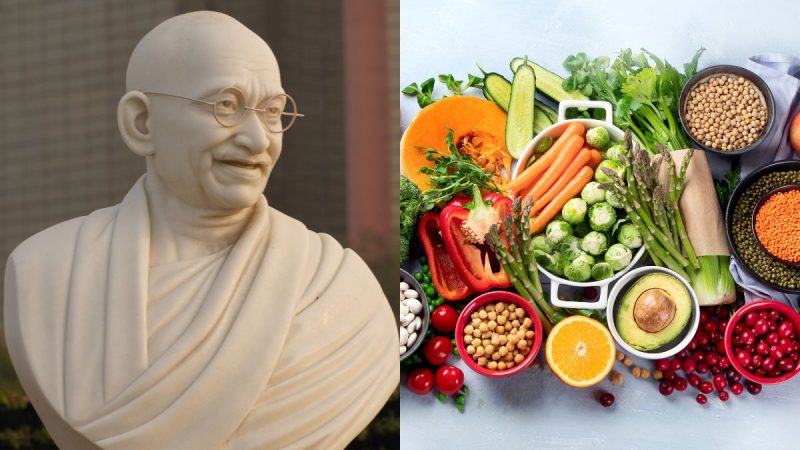Mohandas Karamchand Gandhi was a wise individual in history. His insights into food and health remain relevant today. Our daily food choices significantly impact our overall wellness. Regular consumption of processed and unhealthy foods often leads to serious health issues. By adopting simple, healthy eating habits, we can follow in Gandhi’s dietary footsteps. Here’s a look at the diet that Mahatma Gandhi followed.
What Diet Did Mahatma Gandhi Follow?
Gandhi cherished the natural world and became a vegetarian early in life. Adopting a vegetarian diet offers numerous benefits. You can rest easy knowing no animals were harmed to feed you. Moreover, research shows that vegetarians often have a lower body mass index (BMI) than meat-eaters. They also enjoy healthier cholesterol levels and a reduced risk of cancer. These are compelling reasons to embrace a vegetarian lifestyle and promote your health and well-being.
He primarily consumed raw and cooked vegetables, fruits, curds, unpolished rice, grains, soya beans, nuts, and seeds. Today, our palates crave various textures and flavours. However, we can make small adjustments to create a healthier diet. You can create delicious dishes without relying on store-bought condiments. Experimenting with oils, herbs, and spices can add flavour to your meals.
Also Read: Dr. S. Jaishankar Unveils Bust Of Mahatma Gandhi In Edogawa During His 2-Day Visit To Japan
Specific Food Preferences
Fussy eating is often frowned upon. However, it is not necessarily harmful. Gandhi himself had specific food preferences. As a vegetarian, he consumed no animal products, except for occasional curds. He avoided coffee and tea and was particular about the grains and vegetables he ate. His favourite foods included lauki (a type of gourd), chapatti, brinjal, and plantains. As long as your diet meets your nutritional needs, do not feel guilty about having preferences as unique as Gandhi’s.
Gandhi preferred raw or simply prepared foods. You do not need extravagant cooking equipment to follow his dietary principles. Many modern cooking methods, like deep-frying, compromise health. You can create nutritious meals with just a few basic utensils. Simple dishes like rice and dhal, boiled vegetables, and fragrant curries are easy to prepare. Steaming vegetables is a healthy cooking method that preserves their nutrients. Even sweetmeats and yoghurt can be made in a straightforward manner, reflecting Gandhi’s approach to food.
Gandhi famously used fasting as a non-violent tool in India’s struggle for freedom. He undertook 17 recorded fasts, with the longest lasting 21 days. Today, fasting can complement a balanced diet, promoting overall health. While medical experts do not endorse prolonged fasting, short periods of fasting can have health benefits. Studies suggest that fasting may help regulate blood sugar and reduce inflammation linked to various diseases.
Also Read: Asha Bhosle Shares A Fond Independence Day Memory Of Seeing Mahatma Gandhi & Other Freedom Fighters
Before fasting, try eating at irregular times to prepare your body. Consult a doctor if you have medical conditions that could worsen with fasting. Never attempt to fast for longer than is safe. Do not engage in strenuous activities while fasting, and remember that fasting should be restorative, not punitive.
Cover Image Courtesy: Canva (Representative Image)
For more such snackable content, interesting discoveries and the latest updates on food, travel and experiences in your city, download the Curly Tales App. Download HERE.
